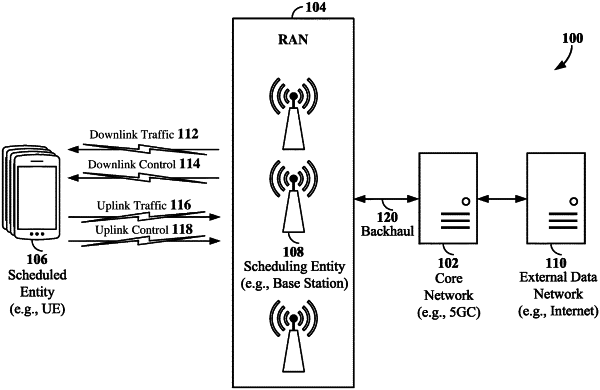| CPC H04W 56/0055 (2013.01) [H04W 72/1263 (2013.01); H04W 72/23 (2023.01)] | 30 Claims |

|
1. A method of wireless communication by a base station, comprising:
determining a plurality of first search spaces indicating potential locations for a first downlink control channel or a plurality of second search spaces indicating potential locations for a second downlink control channel or both, the plurality of first search spaces and the plurality of second search spaces being within a bandwidth part (BWP);
configuring a plurality of first delays respectively for the plurality of first search spaces, or a plurality of second delays respectively for the plurality of second search spaces, or both, wherein
each first delay indicates a respective time delay between a resource location of the first downlink control channel and a resource location of a downlink data associated with the first downlink control channel and is configured for a respective first search space of the plurality of first search spaces that are within the BWP, and
each second delay indicates a respective time delay between a resource location of the second downlink control channel and a resource location of an uplink data associated with the second downlink control channel and is configured for a respective second search space of the plurality of second search spaces that are within the BWP; and
transmitting the plurality of first delays or the plurality of second delays or both to a user equipment (UE).
|